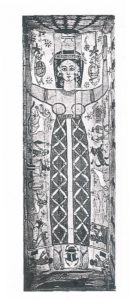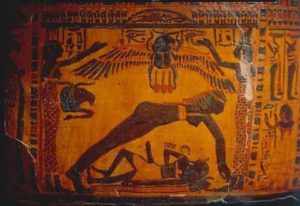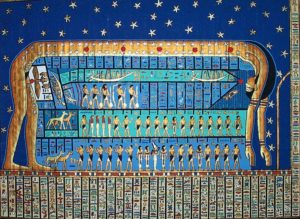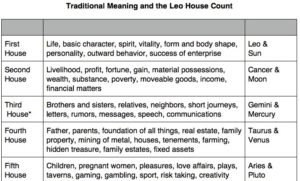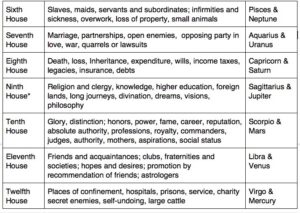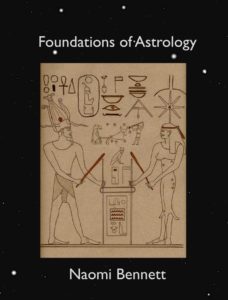The Great Debate on House Rulerships
Excerpt from the book, Foundations of Astrology, on Amazon
By © Naomi Bennett 2015
There has been a raging debate over house rulership for the past 25 years since astrologer/academics like Robert Schmidt, Robert Hand, Robert Zoller, Benjamin Dykes, Robert Holden, etc. have been re-translating the texts of the Hellenistic Greeks and Medieval Arabs since the early 1990’s. Actually the Brits have had this debate even longer since the late Olivia Barclay re-introduced Lilly in the 20th century. I remember going to a British AA conference in the summer 1994 and talking with some British astrologers that never used any planets beyond Saturn! And now so many astrologers have recently gone Vedic in their practices where they stop with Saturn.
All this has given rise to a renewed interest within our international astrological community in astrology’s foundations and origins. As we attempt to ferret out the answers to the long debate about the function of houses versus signs. I have been closely following their findings since 1995. Now our global community is beginning a new debate on how to merge modern and traditional views into a post-modern astrology. As Rob Hand stated in 2005: “So we need to strike a balance between the modernist’s attitude and the traditionalist’s attitude.”1
Deborah Houlding clearly states this dilemma in her revised excellent book reviewing this debate in the 2006 edition of The Houses,Temples of the Sky. Robert Hand wrote the forward to the book and said:
“It may ultimately be true that modern astrology has to go its own way in sorting out the houses. But let us at least do so, if we must, knowing that we have exhausted the possibilities of the old traditions. With this book I believe that there is no excuse for ignoring the history of the tradition.”2
Houlding’s book is a careful review of ancient and modern house meanings. She rejects the idea that there can be any association of sign rulership with the houses. She used the texts of Manilius, Firmicus, Al-Biruni, Lilly and Modern astrologers (she lumps all modern authors together) as comparisons of house meanings across time to show their consistency. Generally, during most of the 20th century, American astrologers followed the Aries house count of Aries ruling the first house, Taurus ruling the second house, Gemini to the third house, etc. until Pisces ruled the twelfth house. Houlding said in her Introduction:
“Since classical times houses have been one of the four essential components of astrology. Along with planets, signs and aspects, their 12-fold division of the celestial sphere forms a fundamental building block in astrological interpretation. Yet curiously, despite all the books that speak of the essential message of house meaning, very little existing contemporary literature to foster a true appreciation of that essence by illustrating where the meaning come from. The origin of their symbolism is poorly understood, and little effort has been made by modern astrologers to investigate and define their meaning… Within the contemporary theories of house meanings, there are presently only two that are given any real credibility. The first is a rather glib assumption that the houses are associated with, and take their meaning from, the signs of the zodiac… Traditional rulerships will fall by the wayside as they become inexplicable through the sign-originated theory… the signs were adapted and broadened out to incorporate the meaning of the houses, which correspond with their natural zodiacal order… The purpose of this book is to illustrate that none of the current theories on signs and psychological wheels can be regarded as historically correct, and that neither do they offer a full and reliable insight into the ‘fundamentals’ of house meanings which the astrologer relies upon in practical application.”3
I agree with her conclusion that none of her references satisfy house rulership, but she left out other ancient non-textual references and the American 20th century astrologer, Carl Payne Tobey. The image below of the Goddess Nut, Mistress of the Sky whose image dates back to 200 AD has a strong, clear astrological message. This image is between the time of Manilius (10 AD) and Firmicus (4th century AD) which Houlding references. It is important to expand our astrological material beyond our fragmented, multi-translated, textual references. These other sources should be included in this new definition of post-modern astrology for the 21st century.
I became a student of astrology in my college days. I once asked Dr. Sim Pounds, D.C. for an interview back in 1969. I was writing a research paper and there just wasn’t much in astrology books available but I was allowed to do personal interviews. He was the President of the American Federation of Astrologers and by coincidence; he worked in my hometown of Tempe, Arizona. So I called him. He was too busy to give me the time but he suggested I call Carl Payne Tobey in Tucson, AZ. I did and the interview lasted all afternoon. I liked him so much he became my mentor in astrology.
Tobey had a completely different view on signs and houses from that of the majority of astrologers. He was part of a group of investigative New York City based astrologers in the 1930’s and 40’s that were trying to dissect astrology and understand its foundations. Sydney K. Bennett (aka Wynn) studied Sanskrit in order to read Indian texts. Grant Lewi was also part of this group. Tobey and Lewi were best friends. Others were Charles Jayne and Dane Rudhyar. They all socialized and published articles in the same magazines edited by Lewi. Lewi only used transits and he didn’t use the Aries house count, he dropped all house rulerships. He just called the houses ‘sectors’ in his book, Astrology for the Millions.4 Tobey was the resident statistician of the group. He gathered thousands of birthdates and hand calculated the data to prove basic principals long before there was a Michel Gauquelin. Tobey loved mathematics and pursued his study of number theory and geometry as his own personal interest. He was always trying to figure out the puzzle of the underlying foundation of astrological design. He firmly believed that astrology was a branch of geometry applied to life on Earth.
Fast-forward to 1993 when I decided to search the world for the clues supporting what Tobey had found by means of his own deductions and his 40+ years of experience. I was looking for the clues to the Tobey house/sign count. I was looking for patterns and images. I had done enough background study that I knew I could recognize and understand the astrological messages inherent in Egyptian images, if I could only find them. There is a great saying by Marcel Proust, “The real voyage of discovery consists not in seeking new landscapes but in having new eyes.” Tobey certainly had new eyes with Uranus on his Sagittarius Ascendant. He was never a follower. He walked his own path.
By luck and synchronicity, I found in the Louvre gift shop, a French magazine Archeologia,8 with an astrological image, right there on the cover. The goddess of the sky Nut was painted on the inside lids of sarcophaguses so the dead could look up to the sky and see the realm of Nut’s rulership.9 The astrological signs are divided left and right and start with the signs of Leo and Cancer. The luminaries of the Sun and Moon rule only one sign each. Then the signs with co-rulerships run down her body in the Hellenistic planetary order of Mercury, Venus, Mars, Jupiter and Saturn.
The division of the signs between Leo and Cancer is not arbitrary. Cancer/Moon on the right is lunar and represents the Egyptian New Year with the summer solstice. Leo/Sun on the left is Solar so the element of duality is shown with this division. There is a hidden message in this arrangement. The duality is representing the daily movement of the Earth’s rotation against the sky. This is the duality between the signs and houses represented by the division between Leo on the left and Cancer on the right.
Another way to present this is to say that as we stand on the Earth, the vault of heaven with the zodiac signs and planets move above us while Earth appears to be fixed. This daily motion shows the planets and signs rise from the eastern horizon and set in the west while the zodiacal houses stay fixed to the observer’s location on Earth. This image below shows this concept of the Earth God Geb prone on the Earth extending his penis as the fixed zenith pole with the revolving stars of the Sky Goddess Nut in eternal coitus with Geb. Joined together in eternal reproduction, they create Life on Earth as the union of fixed earth and rotating sky.
Sky Goddess Nut in Eternal Coitus with Earth God Geb
There is another level of meaning behind this image of Nut, Goddess of the Sky with the God Geb representing Earth in coitus together. This is the duality of rotating Heaven with a fixed Earth. They do a daily dance each day creating life on Earth. This division between Cancer and Leo is not arbitrary or coincidence. The duality of opposite motion splits the zodiac between Cancer and Leo. This structure is present in the meaning of the astrological signs and houses we use in astrology today.
The Egyptians placed great importance on the Sun being reborn every morning at sunrise and dying at sunset as the Goddess Nut swallowed the Sun. The Sun traveled down Nut’s body during the night to be reborn the next morning. Note that the Egyptians were obsessed with the horizon at the Ascendant (sunrise) and the Descendant (sunset). They were constantly tracking the distance between the Sun and the horizon.
Goddess Nut swallowing the Sun to be reborn at Sunrise
We know the Egyptians carefully measured and tracked the astronomical movement of the Sun against the constellations. They maintained a soli-lunar calendar and a long Sothic calendar of 1,460 years for Sirius’ heliacal rising cycle, not to mention planetary cycles too. The Egyptians were the masters of astronomy in the ancient world. These images are all clues to astrology’s design.
The Hellenistic period consisted of an amalgamation of concepts that have become our Western horoscopic astrology of today. This dual structure of opposite motion between Cancer and Leo is still present in the meaning of the astrological houses we use today in astrology. The most common house meanings per Houlding are: 10
* Whether the count starts with Aries or Leo, the 3rd and 9th house rulerships of Gemini and Sagittarius remain the same.
It has only been since the 20th century that astrological authors have assigned Aries to the first house, Taurus to the second house, Gemini to the third house, Cancer to the fourth houses, etc. This is a very new invention over the past 100 years. Lee Lehman states: “I have discovered that contemporary sources have completely obscured the essential differences between planet, sign and house. The concept that 1st House = Aries = Mars is mainly a modern invention”10
One influence to the Aries House assignments might be attributed to Evangeline Adams and Aleister Crowley, the ghost writer for her popular book, Astrology, Your Place in the Sun (1927)12,13 It is with this added confusion of the Aries house count that put Scorpio on the Eighth house, so sex was added to the Eighth house. Sex was never associated with the Eighth as Houlding clearly demonstrates14 Other than minor attributes assigned to modern houses, the majority of house functions are basically intact from early writers. The Leo House Count fits perfectly with the traditional meanings, except there is confusion about the Sixth – Twelfth axis.
With the Leo House Count, the axis is of Pisces to the Sixth and Virgo to the Twelfth. But in the Aries House Count, the axis is Virgo to the Sixth and Pisces to the Twelfth. The signs are reversed between these two methods. These are the only two houses that are mixing up the principles of Pisces and Virgo. The function of these two houses need to be un-snarled and separated.
Twelfth House15
Firmicus: enemies, slaves, defects, illness, bad spirit.
Al-Biruni: enemies, misery, prison, fines, fear, disease, cattle, slaves, servant, exile
Lily: secret enemies, witches, self-undoing, imprisonment, horses, oxen elephants
Moderns: Seclusion, service, charity, unconscious, escapism, mysticism.
Sixth House16
Firmicus: infirmities and sickness
Al-Biruni: sickness, body defects, overwork, slaves, maids
Lily: sickness and disease, servants, labourers, small animals.
Moderns: work, subordinates, chores, health
We have various writers confusing health and sickness, work and subservience, secret enemies, fate and karma between these two houses. The karmic association comes from the Vedic tradition of associating the lunar nodes (which the Jyotish consider to be karmic) with the Twelfth House. This is not seen in the Hellenistic Greeks, they don’t mention karma.
If one is sympathetic to the weaker, non-conformist elements of our social group, I would place that with Pisces. Musicians, artists, poets, psychics, mental illness, illegal drugs fit Pisces. If one is weak or ill, there is the need for servants and nurses to care for you. Non-conformity to rules, keeping secrets, having an underground associates would be with Pisces and the Sixth. Tobey17 thought that Pisces was the best sign for being a spy and keeping secrets. This is the principle of the ‘survival of the weak’. Pisces have empathy for the unfortunate, they wants to help them. It is mass psychology and groupthink. It’s the rhythm of the drums we count out with our feet and the chanting of a mantra to calm the mind and get the group into unison with drums of a tribal dance or a modern rock festival or rave.
If we assign Virgo to the Twelfth, it is the socially practical sign of Virgo that will build the institutions to house the non-conformists and the weak, like mental institutions, hospitals and prisons, all places of confinement.18But these are practical institutions that society builds to take care of people with problems. We separate the contagious from the healthy. We imprison the criminal to protect the social group. We build institutions to house the mentally ill or disabled. Pisces-Virgo doesn’t kick the weak and abhorrent out of the tribe to die in the elements or to live as hermits. Virgo will build a place to institutionalize them, to protect the rest of us. It is a place of service to our social group. If one works as an employee, then that work is assigned to the Twelfth for work and service. These two houses badly need to be separated in functions.19
Our astrological community has been quite limited in that all the recent research of astrological history is constrained only to written texts. In other areas of study such as archeoastronomy, there has been a great emergence of our astrological history cloaked in words like shaman-priests (astrologers) and sky myths/omens (astrological predictions). There is an avoidance of using the word ‘astrology’ but the research clearly reveals ancient temple alignments to stars and the layout of whole ancient cities with a purposeful design to create Heaven on Earth. We need to study and incorporate these astrological images that hold hidden information in our study of this very old practice and modern usage of Heaven on Earth. I know that this will disturb the traditionalists20 but I am attempting to bring in the ancient astronomical and geometric basis of how Hellenistic astrology was designed. It will disturb some modern astrologers that are invested with Aries ruling the First House, but as Rob Hand said, ”it’s time to marry the modern with the traditional in order to have a functional whole for the 21st century.” 21 The table above maintains all of the traditional house functions. The only exception is the Sixth and Twelfth but even these two are only changing which function belongs between them. Carefully look at the traditional list of house functions and see how well the Leo house count fits them like a glove.
I believe this is the correct rulership of the houses, a long debated issue that cannot be put to rest. This is the most logical explanation for the design behind the houses. I hope that open-minded people will investigate the truth in these discoveries. I have worked with this design for over 40 years and Tobey worked with it for another 50 years before me, along with his 700+ students. It functions well and gives a new perspective on the Sixth-Twelfth House issue.
Footnotes
- Hand, Robert, Towards a Post-Modern Astrology, Astrological Conference 2005 of the British Astrological Association in York, UK. 2005, http://www.astro.com/astrology/in_postmodern_e.htm
“So we need to strike a balance between the modernist’s attitude and the traditionalist’s attitude. By the way, I just want to make one thing clear: If I seem to be taking a slam at only certain members of the Jyotish/Vedic community in talking about astrological fundamentalism, believe me, I am not. There are also Lilly fundamentalists, Hellenistic fundamentalists, Arabic fundamentalists… You take any system, as long as it isn’t modern, and you will find somebody who believes in it as a fundamentalist, or – to use a term more fashionable in religious circles – a literalist, one who believes that the books are literally and completely true.
The modernist attitude believes that only the most recent work is any good, and the traditionalist attitude thinks that anything modern is hopelessly flawed and corrupt. Without qualification – these positions are both wrong. And if you disagree with me, fine. But that is my position, take it or leave it! (I have a Scorpio Moon).” - Houlding, Deborah, The Houses, Temples of the Sky, Wessex Astrologer, Bournemouth, England, 2006, Forward by Robert Hand.
- Ibid, Introduction, p. x-xvii
- Lewi, Grant, Astrology for the Millions, Llewellyn Publications, St.Paul, MN, 1969. P.26-27.
- Houlding, p. 6
- Lawlor, Robert, Sacred Geometry, Thames & Hudson Ltd., London 1982, p. 54-55
“The burial practices in the Pharaonic tradition were undertaken not merely to provide a receptacle for the physical body of the deceased, but also to make a place to retain the metaphysical knowledge which the person had mastered in his lifetime. The proportions of the seat of Petosiris as shown in his tomb reflect this intention.” - p.72
- Desroches-Noblecort, Christiane “Le Zodiaque de Pharaon”, Archelogia Numero 292, Juillet-Aout 1993, pages 21-45.
- The sky-goddess Nuit, the mother both of Osiris, the god of death and resurrection, and Re, the sun-god (see Wells, 1992, 1993, 1994)… In Egyptian funerary texts, the coffin, tomb and sarcophagus of the pharaoh were themselves representations of the womb of the sky-goddess, within which his soul or spirit might begin the process of transformation and renewal. Such ideas surrounding the soul returning from whence it came, i.e. the womb of the cosmic mother, is echoed within various pre-dynastic burials, where the body of the deceased was laid to rest in a foetal position. see http://www.grahamhancock.com/forum/CollinsA2.php?p=1
- “Why Hellenistic Planetary Order?” by Naomi Bennett, ISAR International Astrologer Journal, Vol 43, no 1, April 2014, p. 59-62.
- Houlding is very thorough in her house meanings, but they are too extensive to list completely here.
- Lehman, Lee. Essential Dignities, Whitford Press, 1989, p. 8.
Crowley, Aleister, The General Principles of Astrology, edited by Hymenaeus Beta, Weiser Books, Boston, 2002 (originally 1927) p. 55. - In a conversation I had with Bernadette Brady in 2009 in Boston, she believed that Alan Leo was the source of the Aries House Count and that he was quite taken with Freud. Leo first wrote about the Aries House Count in 1891.
- Houlding, p.30.
- Ibid, p. 54
- Ibid, p. 55
- Tobey, Carl Payne, Astrology of Inner Space, Omen Press, Tucson 1972, p. 173-77.
“Prisons seem definitely connected with Pisces and the Sixth House rather than the Twelfth, but this might depend on whose viewpoint you were considering, that of the confined or that of those guarding them. The Sixth House seems very definitely connected with health matters of one sort, while the twelfth is connected with another sort…
I always seemed to find the Sixth House…connected with weakness and a lack of spirit. As to servants, if you were strong enough to do your own work you wouldn’t need them…I think the Sixth House is definitely connected to mental illness, and where paranoia is involved, this could include those secret enemies who are usually imaginary or self-created…
Pisces involves so much that you don’t talk about. That’s why its aspects make one so secretive…Attributing secret enemies to the Twelfth comes from associating that house with Pisces. I have never found any there, but I have found many people fearful of them because they were told that their planets in the twelfth house indicated they had dangerous secret enemies…Pisces is not in sympathy with so-called respectability. It goes around it secretly. Likely to have many strange associations…It should apply to the Sixth House, too. There is also compassion, sympathy for the underdog and the desire for reform.” - Ibid, p.261.
“To me, the Twelfth is the house of work just as Virgo is the sign of work.” - Ibid, p. 296-302.“Virgo has been associated with medicines while alcohol, cigarettes, and all the illegal drugs are associated with the opposite sign, Pisces and its ruler, Neptune. Why should this line be drawn at this point? Some drugs are accepted by organized society and some are not. Virgo involves the accepted while Pisces is identified with the unacceptable…In the future marijuana may be included as acceptable…If Virgo turns sour and enters on a course of crime, as natives of all signs do at times, it seems to do a sophisticated kind of crime involving the falsification of records, forgery, counterfeiting, selling worthless stock, etc.
- Houlding, introduction: “The purpose of this book is to illustrate that none of the current theories on signs and psychological wheels can be regarded as historically correct, and that neither do they offer a full and reliable insight into the ‘fundamentals’ of house meanings which the astrologer relies upon in practical application. Its aim is to recapture the strength of the traditional perspective, where the astronomical and symbolic appreciation of spatial qualities is invested into the very core of our art…”
- Hand, Robert, Towards a Post-Modern Astrology, Astrological Conference 2005 of the British Astrological Association in York, UK. 2005
Friday, September 25, 2015
Read my book, Foundations of Astrology, on Amazon for the answers where I examine the hidden patterns left by the Egyptians, the creators of horoscopic astrology.







